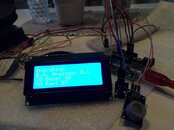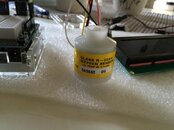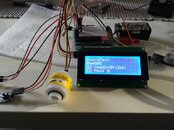As my two big passions in life is diving and building geeky stuff, there is sometimes a cross-over between my two hobbies, like my new project.
This is a breathing gas analyzer based on a arduino uno development board. The plan is to have one handheld unit that analyzes the CO, O2, H2O, CO2 and oil content in breathing gases, so far it only shows the CO ppm, but a medical grade O2 sensor is in the mail from Germany.
The first picture is the very first version, it basically just output the input value from the CO sensor, the second image is of the apparatus where I have tighten up the build making it more compact, made changes to the firmware so it displays the CO ppm and is powered by a battery instead from the USB (I have changed the battery setup from one 9v battery to 4 AA lithium batteries).
The part list is so far
1x arduino uno
1x 3.1" 16x4 LCD screen
1x Kuuco MQ7 CO sensor
2x KY-004 buttons
1x Prototype shield v.5
The O2 sensor I ordered is a Teledyne R-22AV


This is a breathing gas analyzer based on a arduino uno development board. The plan is to have one handheld unit that analyzes the CO, O2, H2O, CO2 and oil content in breathing gases, so far it only shows the CO ppm, but a medical grade O2 sensor is in the mail from Germany.
The first picture is the very first version, it basically just output the input value from the CO sensor, the second image is of the apparatus where I have tighten up the build making it more compact, made changes to the firmware so it displays the CO ppm and is powered by a battery instead from the USB (I have changed the battery setup from one 9v battery to 4 AA lithium batteries).
The part list is so far
1x arduino uno
1x 3.1" 16x4 LCD screen
1x Kuuco MQ7 CO sensor
2x KY-004 buttons
1x Prototype shield v.5
The O2 sensor I ordered is a Teledyne R-22AV







